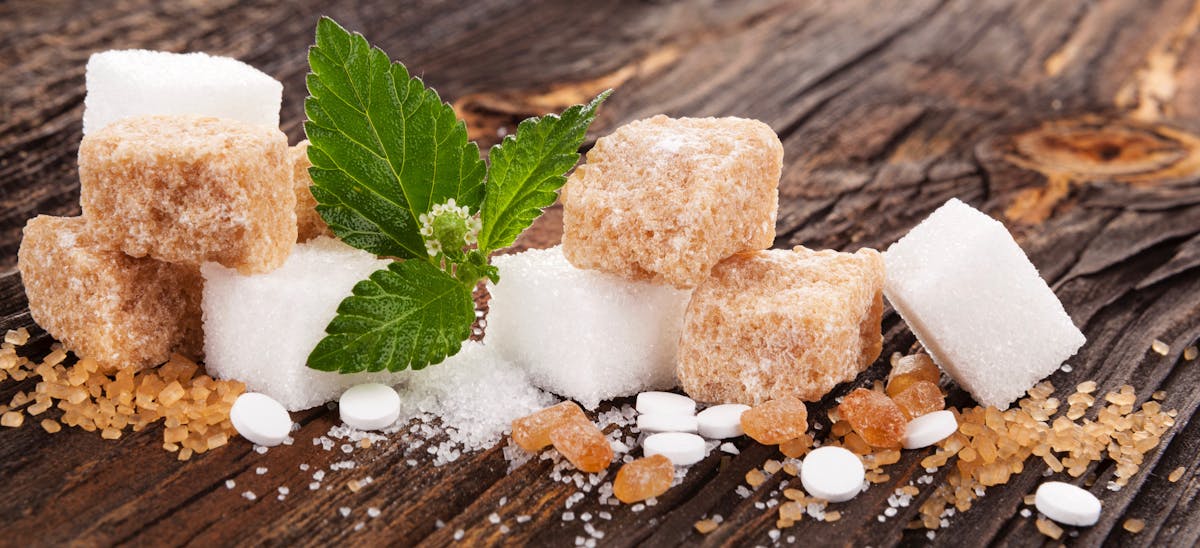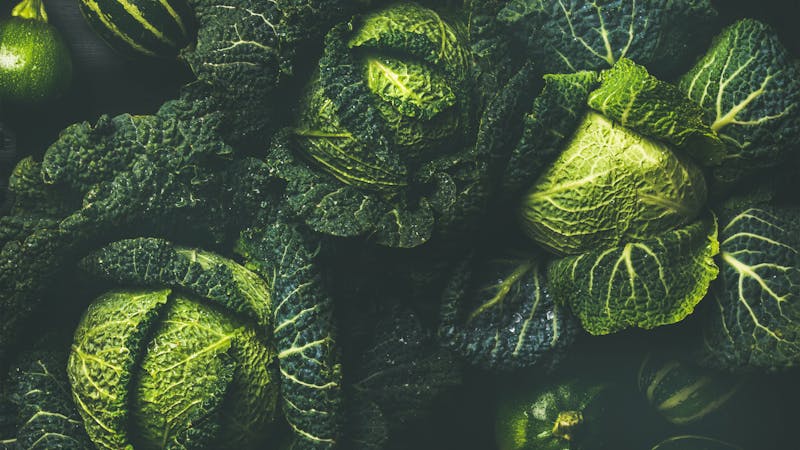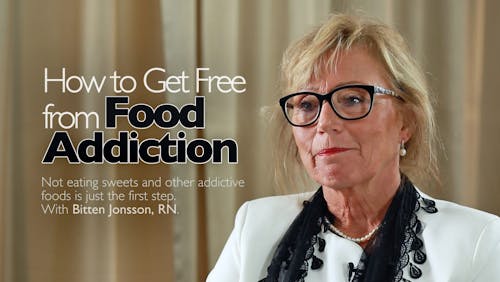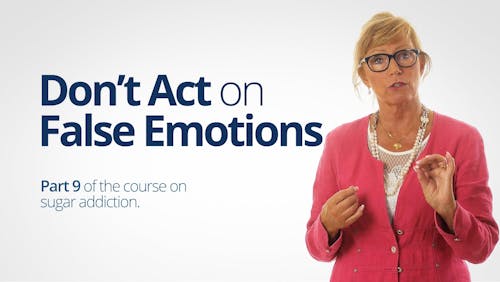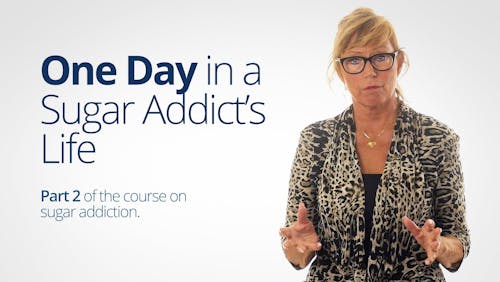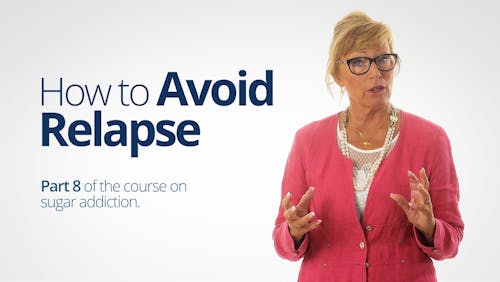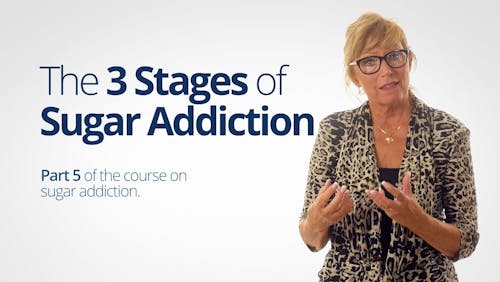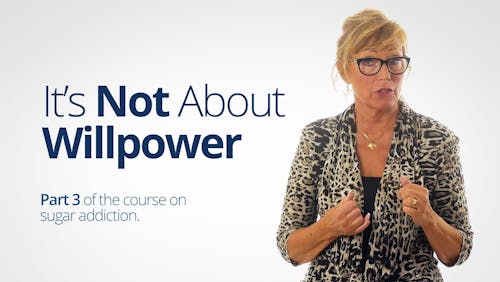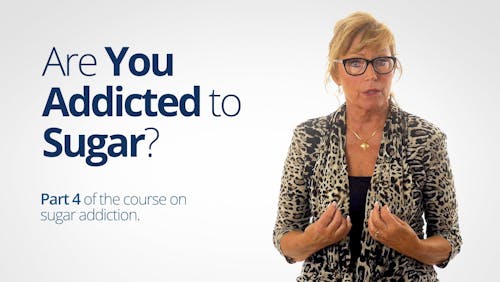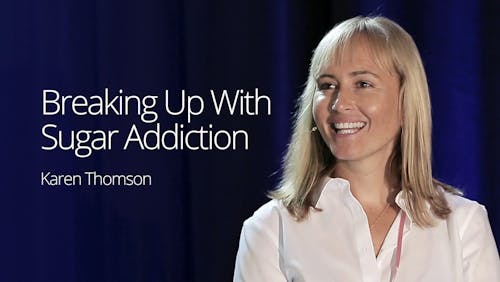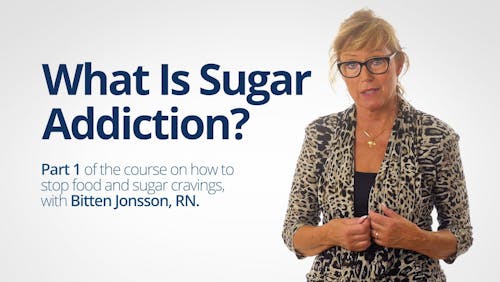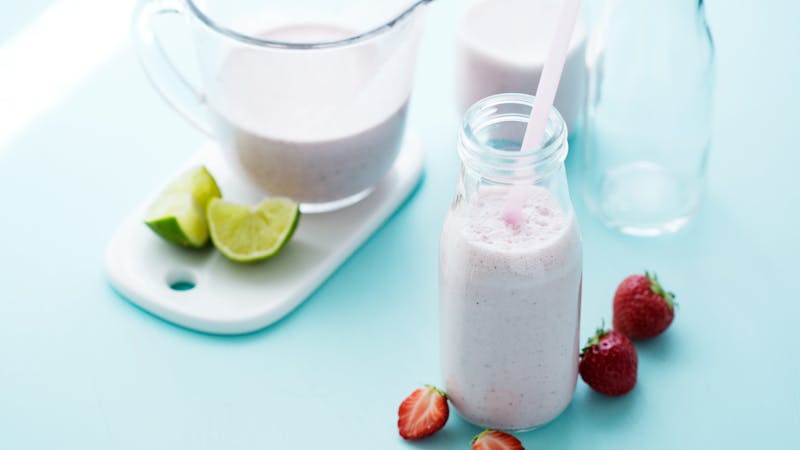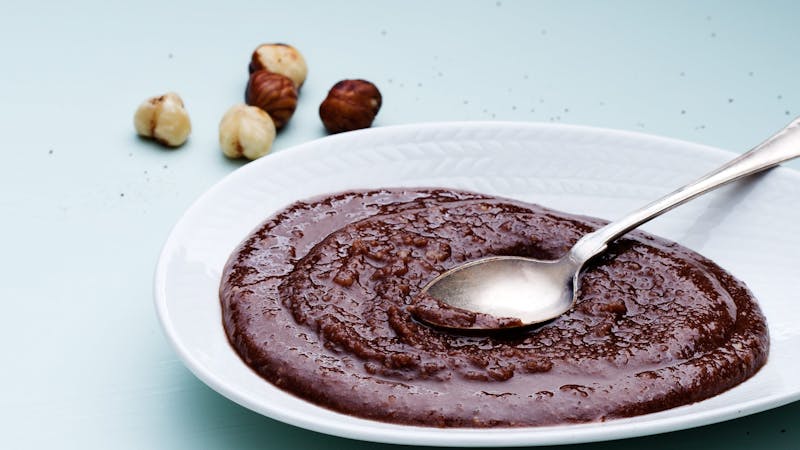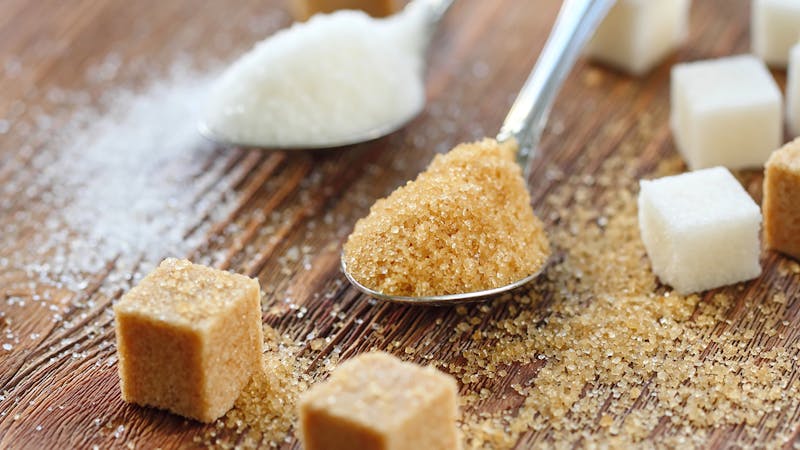The complete guide to sugar
Sugar has never been considered a healthy food, but it has still become a major part of our diet. Whether sugar is simply a source of “empty calories” or something more sinister has been an ongoing debate among nutrition experts. Read on to learn all about sugar, the many ways it impacts health, and practical takeaways for decreasing your intake.
What is sugar?
When you hear the term “sugar,” you probably think of white table sugar, or sucrose. In reality, there are a number of different types of sugar.
Chemically, sugars are either single sugar molecules (monosaccharides) or, more commonly, two sugar molecules linked together (disaccharides). These sugars occur naturally in many foods, and some types are also added to processed foods.
Monosaccharides
Glucose: Glucose is the main sugar found in blood and one of your body’s major fuels. In fact, the term “blood sugar” is often used interchangeably with “blood glucose.”
Food sources: fruit and fruit juice (especially bananas, cherries, dates, and oranges), beets, carrots, honey.
Fructose: Fructose is sometimes referred to as “fruit sugar” because it’s found in many fruits.
Food sources: fruit and fruit juice (especially apricots, grapes, pears, and watermelon), artichokes, sugar snap peas, honey, agave nectar.
Disaccharides
Sucrose: Sucrose contains one glucose molecule and one fructose molecule linked together.
Food sources: fruits, table sugar, molasses, coconut sugar, honey, maple syrup, and any foods or beverages that contain added sucrose.
Lactose: Lactose contains one molecule of glucose and one molecule of galactose, another monosaccharide. It is the main sugar found in dairy foods. Similarly to sucrose, lactose is broken down into its monosaccharide components so that they can be absorbed into your bloodstream.
Food sources: milk, buttermilk, yogurt, ricotta cheese, cottage cheese, sour cream, whey.
Maltose: Maltose contains two glucose molecules linked together. It results from the breakdown of starch (a long chain of glucose molecules) in your digestive tract. In addition, it’s increasingly being used in place of high-fructose corn syrup in processed foods. Because your body breaks down maltose into two glucose molecules which are absorbed directly into your bloodstream, consuming starchy foods and beverages can raise blood sugar considerably even though they don’t taste sweet.
Food sources: potatoes, sweet potatoes, corn, bread, pasta, beer, some breakfast cereals, processed foods.
Is “natural” sugar better?
Naturally occurring sugars are often considered healthier than plain white table sugar. However, though less processed, they still contain the same sugars and therefore may have similar effects in your body.
For instance, coconut sugar is about 70-80% sucrose, with the remainder coming from glucose and fructose.
Agave nectar or syrup contains at least 60% fructose, with the remainder coming from other sugars and carbohydrates.
Honey contains nearly equal portions of glucose and fructose as its main sugars, along with smaller amounts of sucrose, maltose, and other sugars.
Sugars of all types are sometimes referred to as “simple carbohydrates” because they are small molecules that are rapidly absorbed into the bloodstream. Learn more about carbs:
Sugar’s effects in your body
Sugar has been implicated in several diseases and health problems, especially when consumed in large amounts. Based on its ability to quickly raise blood sugar, glucose would seem to be the most harmful component in sugar. However, some research has suggested that excess fructose may potentially be more concerning, although data are conflicting.
It’s not exactly clear why various studies report disparate results, but it may have to do with the amount of fructose, the underlying health and activity level of the people studied, and potentially the funding source for the study.
Fructose is absorbed more slowly into your bloodstream than glucose. Unlike glucose,
it is directly taken up by the liver, where it can be converted to glucose or glycogen, the storage form of glucose.
Potential health effects of sugar overconsumption include:
- Insulin resistance and hyperinsulinemia: Triglycerides created from excess fructose are released into the bloodstream or stored in the liver. When the liver accumulates too many triglycerides, it becomes resistant to insulin and can no longer regulate blood sugar properly. Consequently, the pancreas produces more insulin to compensate, leading to elevated blood insulin levels (hyperinsulinemia).
- Nonalcoholic fatty liver disease (NAFLD): High fructose intake has been recognized as a contributor to NAFLD, as it can lead to excessive storage of triglycerides in the liver. Moreover, researchers have reported that people with NAFLD convert fructose to triglycerides at much higher rates than those who don’t have the disease.
- Potentially increased cardiovascular disease risk: In addition to raising triglycerides and insulin, high sugar intake may lead to decreased HDL cholesterol and smaller LDL particles — all of which may increase heart attack risk.A 2014 observational study found that people who consumed 25% or more of their calories from sugar were nearly three times as likely to die from heart disease as those who consumed the least added sugar.
- Possibly increased inflammation: Research has shown a connection between sugar and inflammation, even at intakes considered “moderate.” In a three-week study, healthy young men who consumed 12 ounces (360 ml) of soda per day experienced a rise in inflammatory markers, along with adverse changes in blood cholesterol values.
- Gut issues: High-sugar diets have been implicated as a possible risk factor for the development and progression of irritable bowel syndrome and inflammatory bowel disease. This may be due in part to adverse changes in gut bacteria. The exact role of sugar in this process is still unclear.
- Elevated blood sugar: Fast-digesting carbs like sugar can have a major impact on blood sugar levels. One study found that whether prediabetic adults consumed 50 grams of honey, sucrose, or high-fructose corn syrup, they experienced similar elevations in blood sugar and inflammation.
- Possibly increased Alzheimer’s disease risk: In light of the connection between insulin resistance, type 2 diabetes, and Alzheimer’s disease, emerging evidence suggests that in susceptible individuals, high sugar intake could perhaps increase the likelihood of developing Alzheimer’s.
- Controversial link to ADHD: While much discussed, the potential link between sugar and ADHD has not been confirmed in controlled interventional studies. Therefore it is unclear if sugar plays a clear causative role in ADHD despite earlier observational findings suggesting it does.However, there appears to be some connection between food and ADHD, as a major study found improvements in ADHD symptoms by excluding many foods, including reducing the intake of sugar and processed foods.
What is the recommended daily intake of sugar in the US?
The 2015-2020 Dietary Guidelines for Americans recommend that added sugars be limited to less than 10% of total calories. For a person consuming 2000 calories per day, this is 50 grams or about 12 teaspoons of sugar per day.
The American Heart Association‘s recommendations are somewhat stricter, with proposed limits of 25 grams (6 teaspoons) of added sugar per day for women and 38 grams (9 teaspoons) per day for men.
In 2015, The World Health Organization (WHO) recommended that added sugars be limited to less than 10% of total calorie intake, and ideally less than 5% of total calories (or about 6 teaspoons daily) for maximal health benefits.
Keep in mind that these limits are for added sugars, like white table sugar, honey, high fructose syrup, and all the processed foods and beverages to which they’re added. Those figures don’t include naturally occurring sugars in fruit or fruit juice. Fruit juice in particular contains significant amounts of sugar. In fact, some researchers have called for the complete elimination of 100% fruit juice from children’s diets in order to lower the alarming rates of childhood obesity.
The recommended intake of added sugars in the dietary guidelines is lower than the estimated 17 teaspoons a day consumed by the average American. However, it may still be too high given the potential health risks — especially as the guidelines don’t include any limits on naturally occurring sugars at all.

Added sugar
While most people would agree that eating too much sugar isn’t wise, many have no idea how much they’re consuming on a regular basis. Just how much added sugar is in our food, anyway?
One study found that 74% of processed foods sold in US supermarkets between 2005 and 2009 contained added sugars.
Moreover, some of the worst offenders are non-fat and low-fat products that are marketed as healthy alternatives. When fat is removed from food, sugar is often added in order to compensate for the loss of flavor and creaminess.
Non-fat and low-fat foods high in sugar include:
- Flavored yogurt: Contains up to 28 grams (7 teaspoons) of sugar per cup
- Fat-free salad dressing: Contains up to 10 grams (2.5 teaspoons) of sugar per 2 Tablespoons
- Low-fat granola: Contains up to 28 grams (7 teaspoons) of sugar per cup
- Non-fat mocha: Contains up to 33 grams (8 teaspoons) of sugar per 16 ounces (450 ml)
Food labels don’t specify how much sugar in a product is added versus occurring naturally. If sugar is among the first three ingredients listed on a label, however, it’s certain to contain a significant amount of added sugar.
Also, keep in mind the many different names for sugar. Read ingredients labels with a keen eye to make sure you don’t overlook any of them. Here is a cheat sheet that can help you identify sugar on any food label, along with other less-than-healthy ingredients to avoid.
Sugar and the obesity epidemic
Obesity rates have increased dramatically since the 1980s, and it’s many believe that increased sugar intake has been a contributing factor.
From an evolutionary standpoint, sugar is a very recent addition to our diet — one that our bodies aren’t really designed to handle in any great amount.
When it was first produced in New Guinea back in the Middle Ages, sugar was only consumed by royalty and very wealthy individuals because it was rare and expensive. However, between the 1500s and1800s, sugar plantations were established in many countries, which significantly increased sugar’s availability and reduced its cost. This led to greater sugar consumption worldwide, which increased further when the prime minister of England removed the sugar tax in 1874, making it even more affordable. In fact, the average sugar intake is estimated to have doubled in the US and the UK between 1900 and 1970.
Still, up until the past few decades, sugar wasn’t a major part of most people’s diets. Sweets were enjoyed occasionally, but they were generally reserved for holidays, birthdays, and other special occasions.
Today, sweet food is everywhere. From breakfast pastries to fruit smoothies, sodas, and sweetened coffee drinks, sugar is often consumed at every meal and snack.
Researchers have discussed a number of ways that excessive sugar intake can promote weight gain, including a centuries-old genetic mutation that gave rise to a “thrifty gene” that makes some people more susceptible to weight gain when they consume a lot of sugar — in particular, its fructose component.
In his best-selling book “The Case Against Sugar,” science journalist Gary Taubes discusses sugar’s role in the diabetes and obesity epidemics. You can also watch him speak about it in this presentation, The problem with sugar.
7,006 views Add as favorite
The sugar industry
The sugar industry is a multibillion-dollar business with a vested interest in making sure people around the world continue to consume sugar on a regular basis.
Over the past 15 years, the amount of money US politicians have received from sugar lobbyists has steadily increased, reaching a peak of $8 million USD in 2016.
Moreover, a group of researchers published disturbing information about the sugar industry dating back several decades.
After conducting an extensive review of documents from the Sugar Research Foundation, these researchers learned that in the 1960s and 1970s, the foundation paid scientists to publish a review that downplayed sugar’s connection to heart disease and focused on dietary fat as a culprit instead.
For additional information, read this article.
Sugar addiction
Dopamine is a chemical that helps control the pleasure and reward centers in your brain. Animal and human research has shown that in many, but not all, individuals, sugar activates dopamine receptors similarly to cocaine and other addictive drugs.
Visual and practical tools to reduce sugar in your diet
Top 5 sources of sugar and low-sugar alternatives
- Soda, fruit juice: A 12-ounce (350 ml) serving of either beverage contains 35-40 grams of sugar
- Breakfast cereals and pastries: Sweetened breakfast cereals can contain up to 20 grams of sugar per serving. Pancakes, muffins and other baked goods are also very high in sugar, especially when topped with syrup or jam.
- Sweet snacks: Consuming pudding, candy, or other sweet treats between meals can add a lot of sugar to your daily total.
- Frozen desserts: Ice cream, gelato, and frozen yogurt are rich in sugar, particularly types flavored with caramel or sugary mix-ins like cookie dough.
- Chocolate: Although dark chocolate has been credited with health benefits, most chocolate treats contain little cocoa and lots of sugar.
Low-sugar alternatives: Sparkling water with a splash of lemon, unsweetened iced tea, or:
Low-sugar alternatives: Keto porridge, Maria’s keto pancakes, or Keto pancakes with berries and whipped cream.
Low-sugar alternatives: Keto and dairy-free vanilla custard, Cinnamon and cardamom fat bombs, or Low-carb chia pudding.
Low-sugar alternatives: Low-carb blueberry ice cream, Keto lemon ice cream, or Low-carb frozen yogurt popsicles.
Low-sugar alternatives: Chocolate with a minimum of 80% cocoa solids, Low-carb chocolate fudge, or Keto chocolate and hazelnut spread.
5-step action plan for reducing sugar intake
- Choose whole, high-protein foods whenever possible. Minimally processed real food is rich in nutrients, flavorful, and very low in sugar. In addition, sticking to high-protein, low-carb foods may help reduce sugar cravings.
- Read ingredients labels on all processed foods. Although consuming whole foods is best, it may not be possible 100% of the time. When it comes to processed foods, steer clear of any that have sugar, honey, or other sugars listed within the first three ingredients.
- Agave nectar
- Barbados sugar
- Barley malt
- Beet sugar
- Blackstrap molasses
- Brown rice syrup
- Brown sugar
- Don’t keep sweets in your home or work area. This is crucial, especially in the beginning, when you’re trying to adjust to eating less sugar. If other people in your house or workplace bring in sugary foods, insist that it be kept out of view.
- Avoid juice and minimize fruit consumption. Even though fruit and fruit juices provide vitamins and minerals, they are concentrated sources of sugar. Stay away from juice altogether, and limit your fruit intake to avocados and olives, along with small amounts of low-sugar fruits like berries. Learn more about sugar in fruit below
- If necessary, use sugar substitutes in moderation while learning to appreciate the subtle flavor of foods in their natural state. Developing a taste for unsweetened foods is ideal. However, sugar-free sweeteners may be useful during the transition to a low-sugar lifestyle. Check out our guide to the best and worst sweeteners below.
Alternative names for sugar:
Did you enjoy this guide?
We hope so. We want to take this opportunity to mention that Diet Doctor takes no money from ads, industry or product sales. Our revenues come solely from members who want to support our purpose of empowering people everywhere to dramatically improve their health.
Will you consider joining us as a member as we pursue our mission to make low carb simple?
